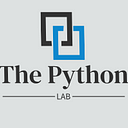Member-only story
XGBoost in Stock Returns Prediction: Using Technical Indicators and VIX Index
This tutorial aims to provide a comprehensive guide on using XGBoost for stock returns prediction. We will explore how to incorporate technical indicators and the VIX index into our prediction model. We will use Python and various libraries such as XGBoost, yfinance and matplotlib to build a complete project.
Table of Contents
- Introduction to Stock Returns Prediction
- Understanding XGBoost
- Gathering Data
- Preprocessing the Data
- Feature Engineering
- Building the XGBoost Model
- Evaluating the Model
- Conclusion
1. Introduction to Stock Returns Prediction
Stock returns prediction is a challenging task due to the complex and dynamic nature of financial markets. However, with the advancements in machine learning algorithms, we can leverage these techniques to make informed predictions.
XGBoost (eXtreme Gradient Boosting) is a popular machine learning algorithm known for its high performance and flexibility. It is particularly effective in handling structured data and has been widely used in various domains, including finance.
In this tutorial, we will focus on predicting stock returns using XGBoost. We will incorporate technical indicators, which are mathematical calculations based on historical price and volume data, to capture patterns and trends in the stock market. Additionally, we will include the VIX index, also known as the “fear index,” which measures market volatility.
2. Understanding XGBoost
Before diving into the implementation, let’s briefly understand the key concepts of XGBoost.
XGBoost is an ensemble learning algorithm that combines the predictions of multiple weak models, typically decision trees, to create a strong predictive model. It uses a gradient boosting framework, where each subsequent model is trained to correct the mistakes made by the previous models.
